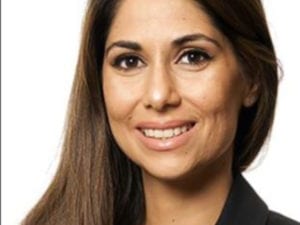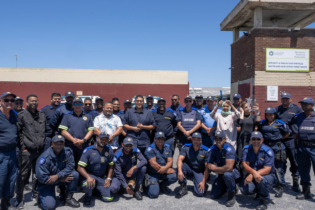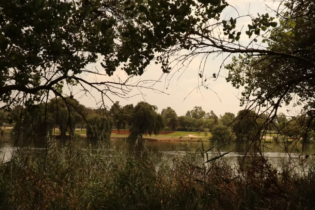At the infrastructure symposium held on 23 June, representatives from the public and private sectors discussed how they could co-operate on infrastructure renewal projects in energy, transport, water and human settlements, digital infrastructure, agriculture and district development.
By Alexandra Felekis, Partner at Webber Wentzel President Cyril Ramaphosa hosted the inaugural Sustainable Infrastructure Development Symposium South Africa (SIDSSA) via video conference. The aim of the symposium, which was themed “Investing in infrastructure for shared prosperity: now, next and beyond”, was to discuss the prioritisation of infrastructure development to support structural transformation, growth and job creation Ramaphosa noted that both advanced and developing economies are looking to infrastructure as one of the key sectors to stimulate economic recovery from the impact of Covid-19 and that infrastructure investment has both short- and long-term benefits for economies. SIDSSA is different from other Government infrastructure initiatives, as a substantial amount of groundwork has already been done by Government in collaboration with financiers and the private sector. Through this, Government has identified a credible and bankable project pipeline that will facilitate a symbiotic relationship between the public and private sectors. Apparently, the projects identified have already passed the bankability hurdle and institutions such as the New Development Bank (NDB), the Development Bank of Southern Africa (DBSA) and the African Development Bank (AFDB) have pledged to assist with the development funding models. The Minister of Public Works and Infrastructure, Patricia De Lille, indicated that a new methodology of planning and project preparation, referred to as the sustainable infrastructure development (SIDS) methodology, has been developed. It aims to ensure that infrastructure development is not merely undertaken in a transactional manner. Under the SIDS methodology, projects and programmes are evaluated in terms of, among other things, how they will advance the National Development Goals and in particular the National Development Plan, the National 7 Key Priorities of the sixth administration, the African Union 2063 Agenda and all the commitments made by the President in state of the nation addresses. The SIDS methodology was applied to an initial list of 177 projects and it was found that 55 projects complied with the new methodology. The projects were then divided into six sectors identified for impactful investment: water and sanitation, energy, transport, digital infrastructure, agriculture and agro-processing and human settlements. It was suggested that implementation of identified projects could be expedited under the Infrastructure Development Act, 2014. This would be done by designating and gazetting the identified projects as strategic integrated projects. The Government proposed that the perceived lack of capacity at various state-owned companies responsible for implementing these projects will be solved by direct collaboration with private sector experts seconded to these institutions. Dr Kgosientso Ramokgopa, the Head of Investment and Infrastructure at the Presidency, acknowledged that for the public sector to be able to build an aggressive public sector-led infrastructure programme, the support of the private sector would be required. He said that Government had been working together with the private sector over the past five months to ensure that the projects that were developed were bankable. Three pathways for funding will be considered to finance the identified projects: commercial finance, blended finance and fiscal allocation. A number of the identified projects have received firm commitments from funders and these commitments were confirmed by representatives of the NDB, DBSA and AFDB at the symposium. The SIDSSA was then divided into various round tables to discuss, inter alia, the six identified sectors and the funding of infrastructure projects. Below are a few of the key takeaways from the sessions.Energy
At the energy roundtable discussion, it was noted that there have been structural limits to growth in the energy sector which were further affected by Covid-19. There are also numerous challenges in the economic development space including the need for increased black ownership and community participation in the energy sector. Vivien Foster, Chief Economist for Infrastructure at the World Bank, said that we need integrated energy planning in South Africa, covering electricity, gas and liquid fuels, as these things are all being done in isolation now via the IRP2019, Gump and other policy documents. Tshifiwa Mogoro, the head of the IPP Office, announced that the RFP for the 2000MW Risk Mitigation IPPPP should be out by the end of July 2020. This programme is technology-agnostic and designed to fill the energy supply gap quickly. In addition, the determination in terms of section 34 of the Electricity Regulation Act, 2006 made by the Minister of Mineral Resources and Energy, Gwede Mantashe, in February 2020 in respect of various new generation technologies in line with the IRP2019 is awaiting NERSA’s concurrence. The RFP should be issued in Q2 of 2021. Nuclear and coal were once again hot topics. Minister Mantashe made it abundantly clear to the attendees that South Africa’s energy mix in the IRP2019 catered for different energy sources (nuclear, coal, gas and renewables). If Government procures a particular source it should not be seen as being to the exclusion of other sources. Therefore, nuclear and coal would continue to form an integral part of the energy mix. The Minister also mentioned that Government has engaged with the Government of Mozambique on ways in which South Africa could access the gas in Mozambique. The Government is also considering increasing its ownership in the gas pipeline between South Africa and Mozambique. The role of Eskom in growing our energy infrastructure and the need for more affordable electricity were also discussed. Government said that while the intention is to make electricity more affordable, electricity tariffs currently have to be raised to enable Eskom to remedy its infrastructure issues so that the growing demand for power can be met. It was acknowledged that while this is the case, the poorest of the poor will likely not be able to cope with the rising costs of electricity.Transport
At the transport roundtable, the point was raised that the two biggest factors currently influencing the transport industry are globalisation and global warming. It was also recognised that the benefit of public transport is that it has the capacity to convey a vast amount of people, but the effects of Covid-19, particularly social distancing measures, are affecting the capacity of public transport to carry as many people, which means that some of its advantages are falling away.Ms Portia Derby, CEO of Transnet, said that borders are currently a real constraint on effective transportation. There was a call to create borderless traffic flows on both rail and road. It was agreed that the focus needs to be on developing hub ports in South Africa and identifying where shipping port hubs should be located in Africa.
The Minister of Transport, Fikile Mbalula, confirmed that the Department of Transport is currently finalising a National Rail Policy and that additional funds are being allocated to the expansion of harbours. The Department of Transport is also establishing a Maritime Development Fund to boost maritime and other related activities. As far as global warming is concerned, transport infrastructure development would need to focus on and address a move from motorised to non-motorised transport, from private cars to public vehicles and from road freight to rail. The appropriate regulatory and governance framework would need to be developed to enable this to take place. The Government is taking steps to address this. Three South African metros are starting to procure electric buses and the President signed the Carbon Tax Act in June 2019. Funding of projects is critical. The European Investment Bank has a keen interest in green infrastructure development and is looking for projects that will be beneficial for both the economy and the climate. At least half of the European Investment Bank’s current funding has to go towards green infrastructure development by the end of 2025.







